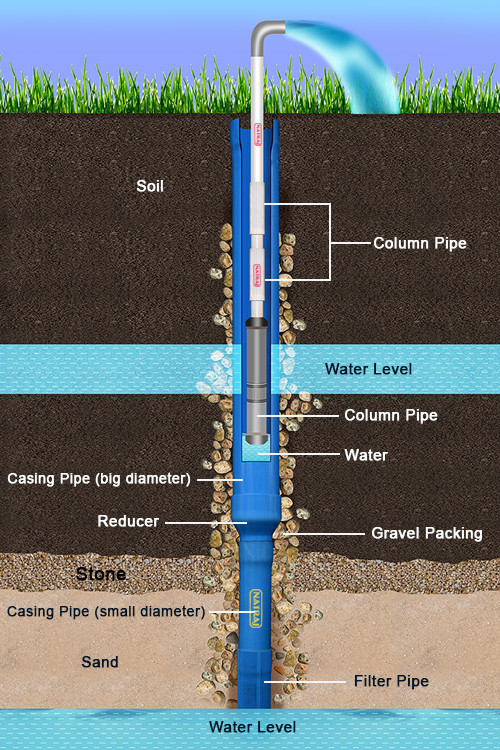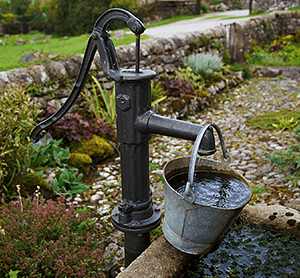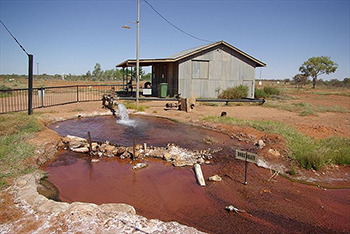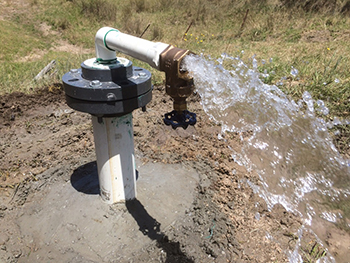What is Bore Water?
Bore water is groundwater that has been accessed by drilling a bore into underground aquifers (water storages) and pumping to the surface.
Aquifers may contain chemicals and micro-organisms that are potentially harmful. Some of these chemicals are naturally occurring (such as those present in soils and rocks) while others are a result of contamination.
Deep Aquifers
Confined or deep aquifers are usually deep underground which helps protect the water source. These types of aquifers are usually covered by more than 20 meters of rock or clay which act as a natural filter preventing microbial contamination.
Unconfined or shallow aquifers
…are not protected by thick layers, because they are closer to the surface above and are susceptible to both chemical and microbiological contamination.
Disclaimer: This information on water bores has been gathered from local Government websites across Australia. Due to local Government Regulations and legislation, this information should be used as a general guideline for water bores. For specific State wore bore requirements and information, refer to your local government websites.
Water Bore Types
Deep Bores
Deep bores are usually used when the aquifer is 20 meters below the ground.
The microbiological quality of water in deep or confined aquifers is generally very good. The water quality will continue to be good if the bore is properly constructed, protected from the entry of surface water and well maintained. Though its microbiological quality may be good, water in these aquifers can contain high concentrations of naturally occurring hazardous chemicals.
Before using a deep bore, obtain a chemical analysis of the water.
Shallow Bore
Due to shallow bores not being protected by thick layers of soil or clay, shallow bores are not generally recommended as a suitable source of drinking water, particularly in urban areas.
Using Bore Water
Depending on quality, the uses for deep bore water can include irrigation, livestock watering and clothes washing. Bore groundwater may be deemed safe for drinking, cooking, filling swimming pools or watering edible plants such as homegrown vegetables only AFTER IT HAS BEEN FULLY TESTED by a specialist laboratory.
Particularly in urban settings and where mains water is available, the use of shallow bore water isn’t recommended because of the high likelihood of chemical or microbial contamination. If you have no choice but to use water from a shallow bore, testing requirements will be more intense than for water from a deep bore.
The landowner is responsible for the safety aspects of bore water.
It is not always possible to tell if bore water is contaminated. However, changes in appearance or odour can indicate contamination. If this occurs, owners are advised to check the integrity of the bore and to test water quality. If you suspect your water is contaminated, seek advice from your local council Environmental Health Officer.
Bore Water Testing
Bore water quality may change over time. Therefore, after the initial analysis, the bore water should be checked every 2 to 3 years and monitored by the owner for any undesirable changes in water quality. Shallow groundwater will need to be tested more frequently.
How to Test your Bore Water
All testing of the water samples from a private bore should be done by a National Association of Testing Authorities (NATA) accredited analytical laboratory. Contact details for the laboratories can be found by searching on the web for “bore water testing labs” or under “Analysts” in Yellow Pages®. Advice should always be sought from the laboratory regarding the appropriate way to collect a sample.
If at any stage there are changes in appearance or odour, immediate water quality testing is advised.
Refer below for more information on what is tested and the frequency of testing for private bores. Local Health’s Scientific Services for assistance.
How Often do I test my Bore Water?
The testing frequency may vary depending on the community type and size served by the bore so contact your local Council Environmental Health Officer to determine adequate testing regimes. As a general rule, the type of quality testing and frequency conducted is:
- microbiological – every three months.
- chemical quality – every two years.
Regular testing should form part of a documented risk management plan for the water supply. For assistance in the development of a drinking water management plan, refer to the National Health and Medical Research Council’s Community Water Planner.
Bore Water Testing Requirements
Both microbiological and chemical quality tests need to occur prior to use, particularly where the previous history of the bore is unknown. If at any stage there are changes in appearance or odour, further water quality testing is advised. Bore water intended for drinking, cooking, use in swimming pools or watering edible plants should undergo a phase one test, and if applicable a phase two test. We would suggest testing the water at two locations. Firstly at the bore and secondly at the outlet of the water tank as the water tank material can alter the condition of the water. Bore water used for any commercial purpose (such as food premises) or for community-based supplies (such as schools or caravan parks) requires routine testing to ensure that the water is suitable for drinking as defined under the Food Act 2001.




